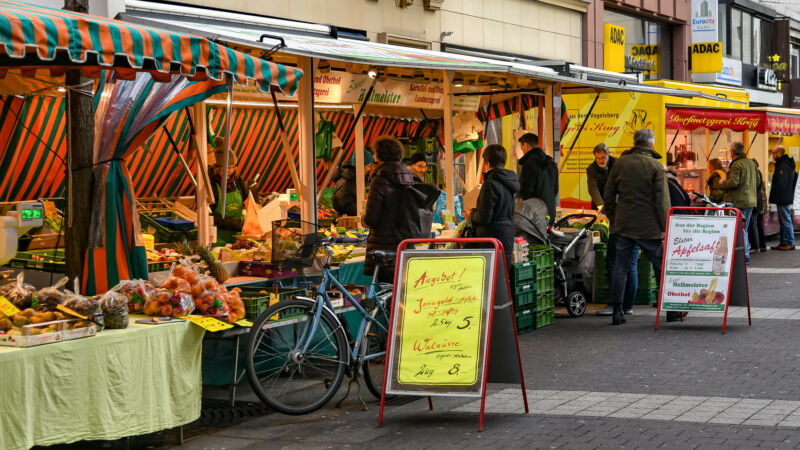EU carbon-trading market has reduced emissions despite low carbon prices

Enlarge / It's not that kind of market, but remember going places? (credit: Jorge Franganillo / Flickr)
There's more than one way to get people to do something. You could just tell them they have to do it, of course. But you could instead give them an end goal and an incentive to get there and let them work out how. The latter is basically the idea behind carbon cap-and-trade markets. You set a cap on the total amount of greenhouse gas that can be emitted and then let entities buy and sell the permits that allow a defined quantity of emissions. If one company can't clean up its process, it will have to buy permits from one that can. If another company reduces its emissions greatly, it will be able to sell its excess permits for additional profit.
The EU set up one of these markets in 2005, known as the European Union Emissions Trading System, that covers emissions of industry and power plants. The price for permits has remained quite low on the market, though, prompting criticism that it was too lax to have any impact. Prices started between 20 and 30 euros per ton of CO2 but have drifted below 10 euros in recent years. A new study by Patrick Bayer of the University of Strathclyde and Michail Aklin of the University of Pittsburgh argues that it isn't quite that simple, and the permits are having an effect despite their bargain-basement pricing.
Low, low pricesFor starters, the price can be low for a number of reasons. Criticism has generally focused on the allocation of permits by governments-if there are too many given away, there's little need to trade on the market. The researchers point out that there are other reasons that demand for permits can be low, including emissions reductions progressing faster than the overall cap is being ratcheted down.
Read 7 remaining paragraphs | Comments